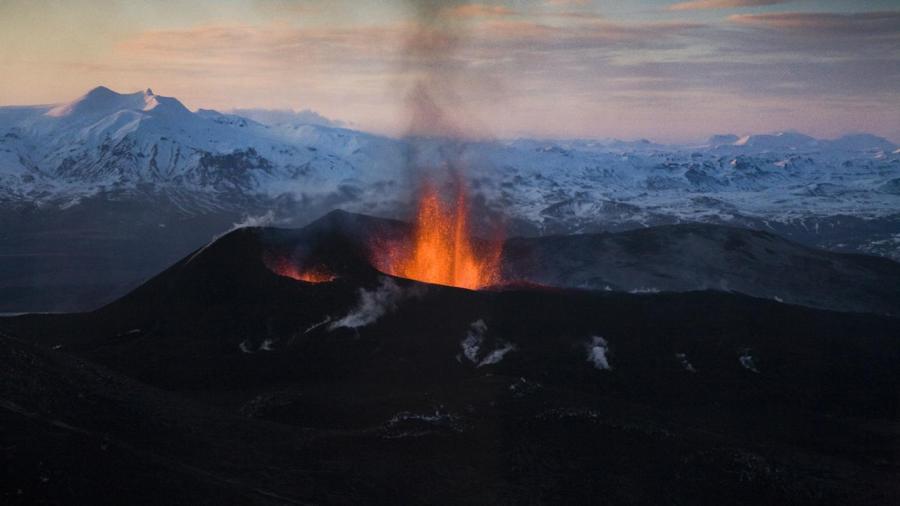How Are Volcanic Mountains Formed?

Volcanic mountains form as lava oozes forth from cracks in the earth. The lava builds up around the area where the eruption occurred. Layers build upon layers and over a period of time, a volcanic mountain forms.
There are several ways that volcanic mountains are formed. Shield volcanoes, which are very wide with a gentle slope, are formed by long periods of eruption with low-viscosity lava. The lava travels a great distance before cooling.
Stratovolcanoes are exactly the opposite. Eruptions of high viscosity lava and explosive emissions of ash, rock and lava make these volcanic mountains much taller than they are wide. The ash from these volcanoes has caused widespread climate change and massive destruction when the volcanoes erupt. Mt. Vesuvius is one of the most famous examples of a stratovolcano. It leveled the island of Pompeii and killed everyone on it when it erupted.
Lava domes are similarly dangerous in nature. They form over a period of months, years or even centuries, and they are extremely unpredictable. Very slow-moving lava spews forth but barely leaves the site of eruption. Over time, the lava builds around and over the fissure vent, creating an unstable and constantly growing cap that acts as a pressure valve for what is underneath it. Once the pressure builds up enough, it causes an area of the lava dome to collapse or erode, spewing a good deal of lava and ash with it. If the plug withstands even more pressure, the eruption ends up explosive and destructive in nature.





